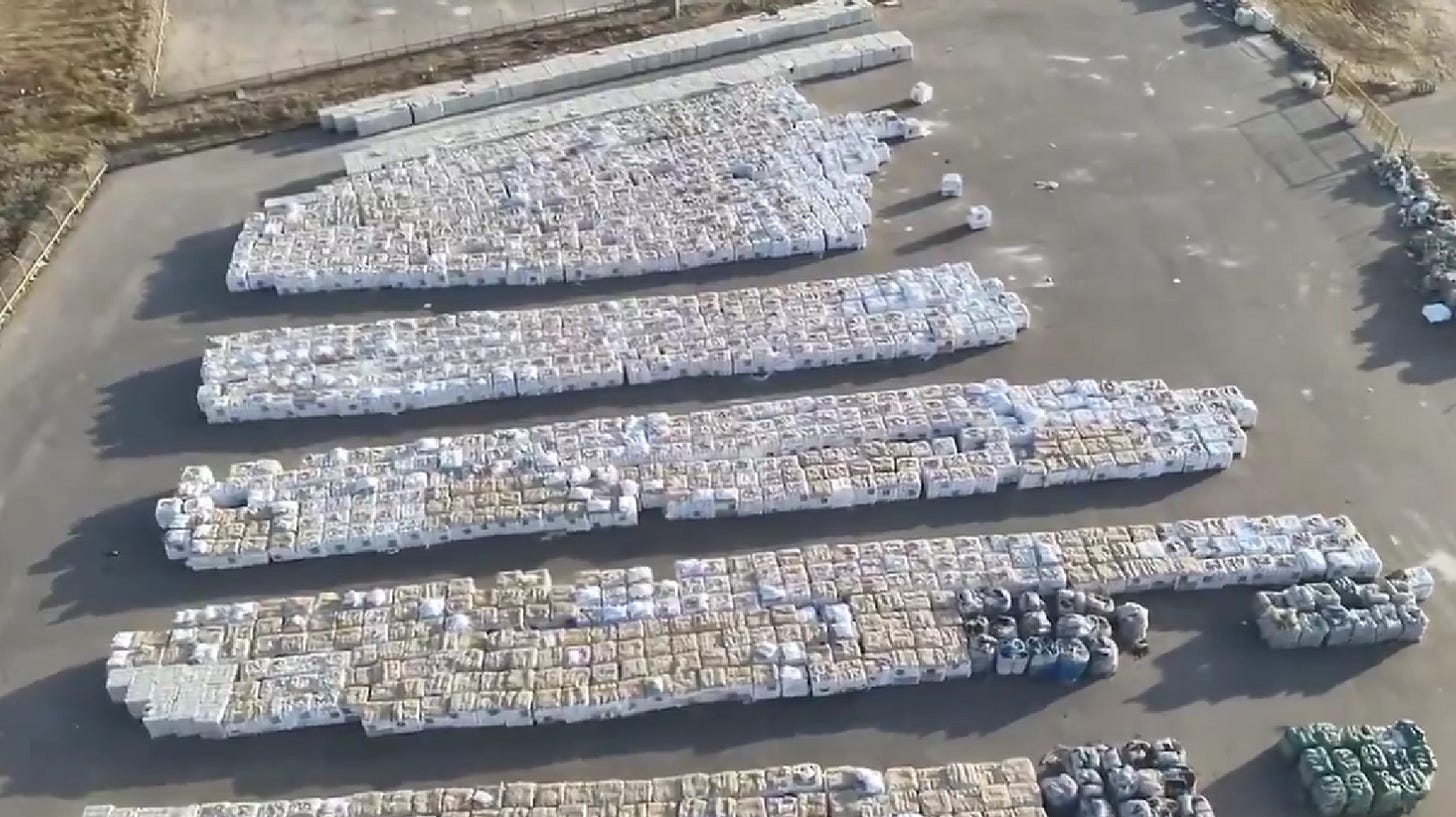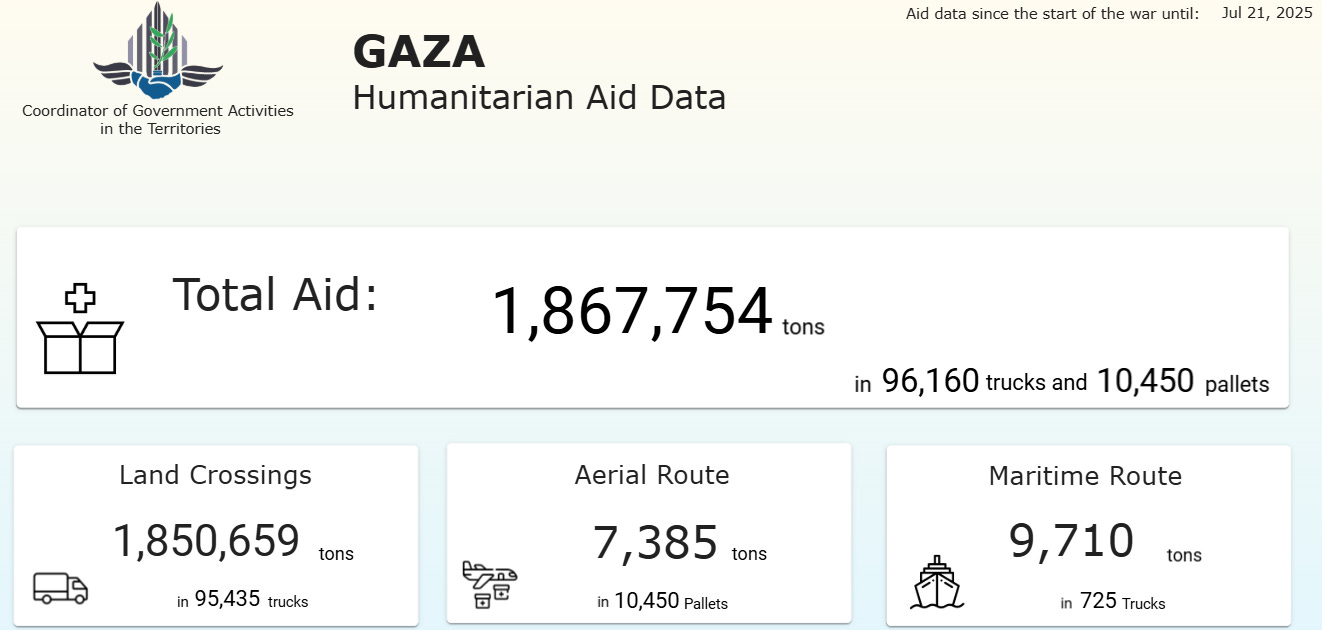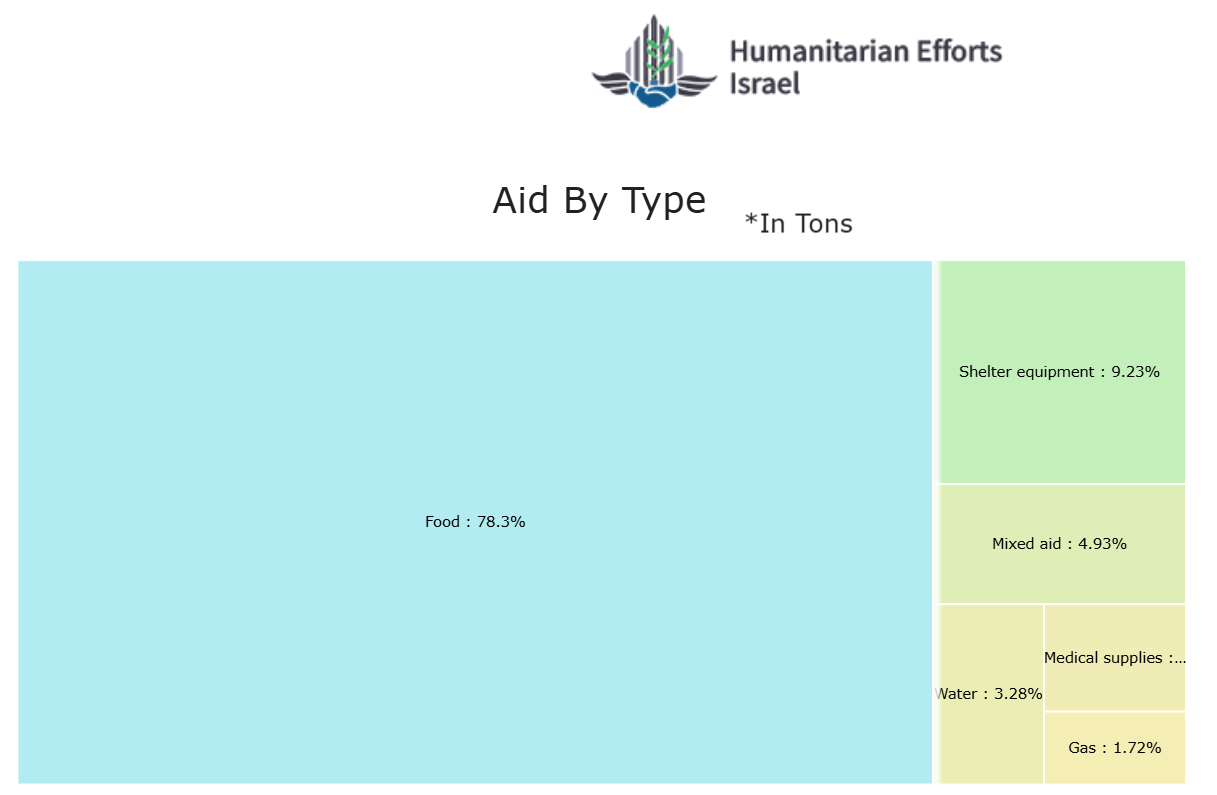The Math is in: Israel’s Aid to Gaza is Unprecedented in Modern Warfare
It's exceedingly rare in modern warfare — if it’s ever happened at all — for a belligerent to facilitate such a massive scale of aid into the territory of its active adversary. The numbers prove it.

Following the Hamas attacks on October 7, 2023, and the ensuing war, Israel – which controls most access points to Gaza – has facilitated an unprecedented volume of humanitarian aid into the territory. According to the Israeli military liaison agency COGAT, as of July 21, 2025, 1,867,754 metric tons of aid had entered Gaza since the start of the war. Notably, 78.3% of this aid – approximately 1,463,000 tons – was food.
This volume equates to roughly 850 kg of aid per Gaza resident (based on a population of ~2.2 million) over the course of 21 months – or about 485 kg per person per year. Of that, food alone accounted for approximately 666 kg per person over 21 months – or about 381 kg per person per year.
It is exceedingly rare in modern warfare – if it’s ever occurred at all – for a belligerent to coordinate and permit such a scale of aid into the territory of its active adversary. Most historical comparisons involve either third-party humanitarian corridors or efforts that were limited in scope, duration, or volume. By contrast, the Gaza case represents a sustained, large-scale aid operation during an ongoing conflict – coordinated by the belligerent itself.
Historical Cases Since World War II
Berlin Airlift: Ally-to-ally (1948–49): The Allies delivered 2.3 million tons of supplies to 2.5 million West Berliners over 15 months – about 920 kg per person in total, or 736 kg per person per year. However, this was aid from allies to allies, not a belligerent aiding its enemy.
Biafran Civil War: Third-party NGOs (1967–70), church-led NGOs delivered approximately 60,000 tons of aid over two years to around 2 million civilians—about 30 kg per person in total. The Nigerian government opposed and obstructed these efforts.
Siege of Sarajevo: United Nations (April 1992–early 1996), UN airlifts delivered approximately 160,000 metric tons of supplies to around 350,000 residents, amounting to about 457 kg per person in total—or roughly 130 kg per person per year. Serb forces allowed some access but often impeded aid.
Precise per-capita tonnage figures for other conflicts are difficult to locate — fewer than a half-dozen cases offer the clear combination of known total aid weight, defined population, and duration. In most other humanitarian crises (Somalia, parts of Syria, Yemen, DR Congo, etc.), data is reported in programmatic or population-reached terms, without exact per‑kg per‑person annual averages.
Aid Per Capita: Gaza in Comparative Perspective
Gaza: ~850 kg per person total (~485 kg/year)
Berlin (Airlift): ~736 kg/year
Sarajevo: ~130 kg/year
Biafra: ~30 kg total over several years
Only the Berlin Airlift exceeds Gaza in raw per capita delivery – and that was a special Cold War case of aid to a friendly enclave. Gaza is unique in that such a large volume of aid was facilitated by the belligerent itself to its adversary in wartime.
In nearly all historical comparisons, either the aid was delivered by third-party actors, was severely obstructed by combatants, or occurred under ceasefire conditions. Gaza is unique in being a case of direct aid coordination by a belligerent to the territory of its active military foe.
Critics may argue that Israel’s role as a so-called “occupier” or allegations of war crimes somehow undermine the significance of its aid facilitation. These are serious accusations that deserve their own examination — and can be debated separately. But they do not negate the basic, quantifiable reality: whether one approves of the methods of distribution or not, Israel has coordinated the entry of more humanitarian aid, per capita, into enemy-held territory during wartime than any other country in modern history.
Conclusion
With nearly 1.87 million tons of aid delivered – 78.3% of it food – Gaza has received one of the largest and most sustained humanitarian flows in modern wartime history, especially considering that it was coordinated by an active combatant. The per capita delivery rate of ~485 kg/year is exceeded only by the Berlin Airlift and far surpasses every other known example in conflicts since World War II.
While humanitarian conditions inside Gaza remain dire and more aid is needed, the scale and intent of Israel’s coordination effort stand out as historically exceptional. Israel’s facilitation of humanitarian access into enemy territory – during ongoing conflict – is, by both historical and comparative standards, virtually without precedent.



